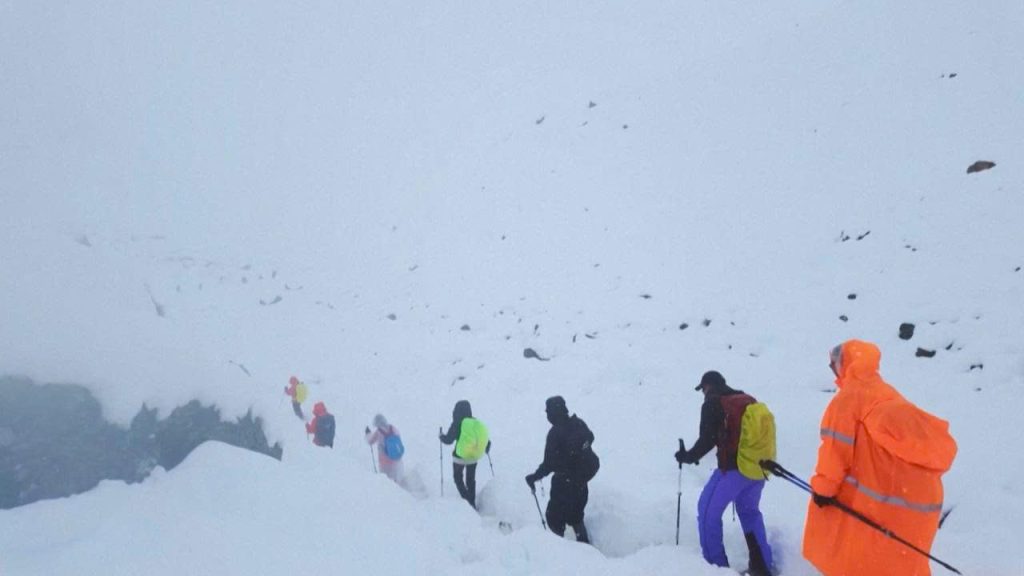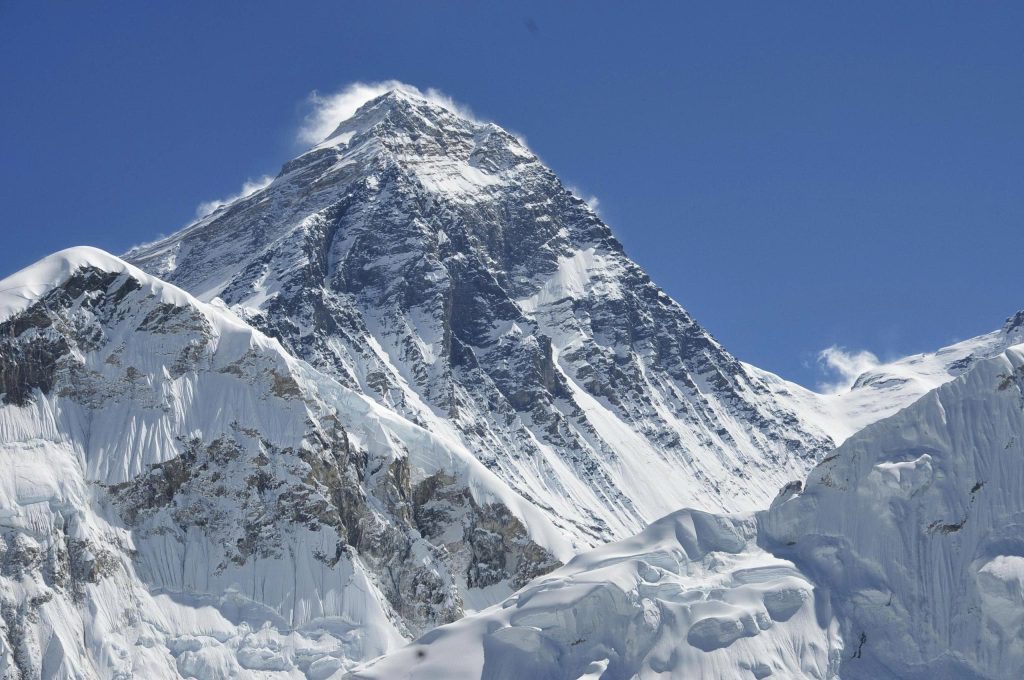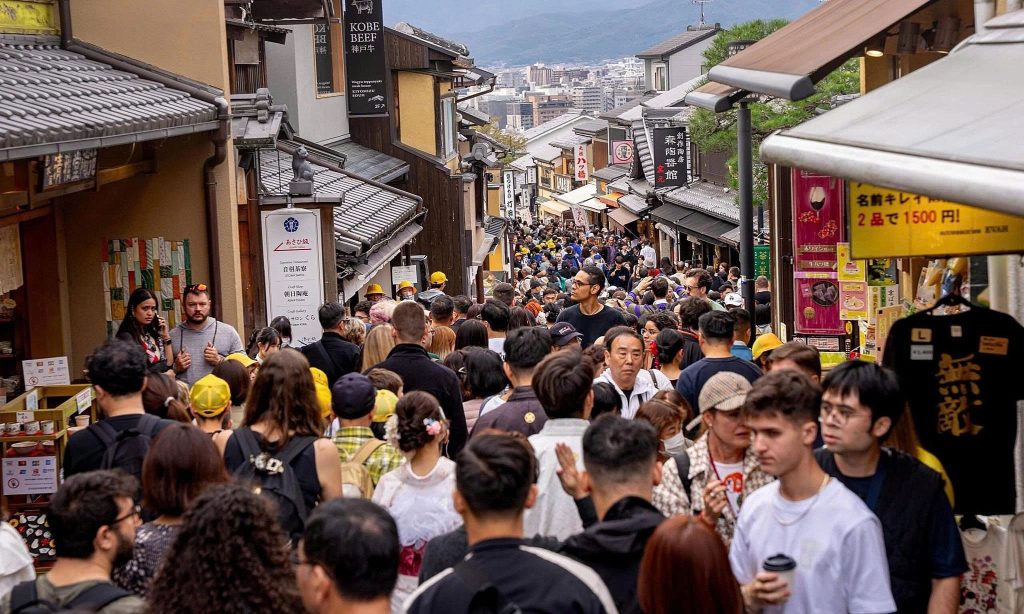Hundreds of tourists trapped at elevations above 4,900 meters on the Tibetan side of Mount Everest due to an unseasonal blizzard were forced to stay awake all night, continuously clearing snow from their tents, fearing they would be “buried alive.”
Chinese officials confirmed on October 6th that approximately 350 people had descended the mountain safely. However, at least 200 individuals remained stranded on the eastern slopes of Everest, within the Tibetan Autonomous Region.
The area had seen an influx of thousands of tourists eager to enjoy China’s Golden Week holiday, an eight-day national holiday period. But unusually heavy snowfall on the nights of October 3rd and 4th blanketed the region, trapping hundreds at high-altitude campsites.
“It was the most severe weather I have ever faced in my entire hiking career,” wrote Dong Shuchang, a Chinese tourist, on the social media platform Weibo, describing the “fierce blizzard on the eastern slopes” of Everest.

Another tourist shared their terrifying experience on Xiaohongshu, a popular social media app: “Waking up in the middle of the night, I saw the snow had nearly covered the entire roof of the tent. This was the first time I truly felt the fear of being buried alive.”
A woman from Shenzhen reported that her husband, who was among those stranded on Everest, was trying to withdraw from the mountain, but the path back was extremely difficult due to the dense snowpack.
“Even for the rescue teams, moving is not easy. They have to clear the fresh snow just to open a path. I only hope my husband’s group meets the rescue team safely soon,” the wife stated. According to her account, her husband barely slept all night inside the tent, consumed by the fear of being engulfed by snow.
One tourist recounted that their entire group was “too scared to sleep” on the night of October 4th as the snow deepened, forcing them to venture out to shovel snow every 90 minutes. The group made the critical decision to descend the mountain the following morning as the weather continued to deteriorate.
“On our way down, we met the guide’s father, who was searching for his son. It was then we realized the snow in the valley was also very deep. The villagers were unable to contact their relatives on the mountain and were incredibly worried,” the tourist recalled, highlighting the widespread nature of the sudden storm.

The northern and eastern slopes of Everest, particularly in Tibet, are often more accessible than the routes in Nepal, attracting a large number of tourists for non-technical trekking activities that do not involve summit attempts.
Social media images and videos painted a vivid picture of the ordeal, showing tents buried deep in the snow and groups of trekkers wading through waist-deep snow to make their way down the mountain.
“The snow was extremely heavy, and the paths were incredibly slick. People kept staggering, some slipped and fell, and some were hit by yak,” one member of a descending group reported. They added, however, that they were fortunate that everyone in their group made it safely to the bottom where they were met by buses.
By the afternoon of October 5th, approximately 350 people had managed to reach the small town of Qudang, located about 48 kilometers from the Everest Base Camp (EBC), reportedly in “good health.”
At least 200 remaining individuals were still stranded but had successfully established contact with authorities. Hundreds of rescue personnel were immediately dispatched up the mountain to provide assistance and to clear the vital paths blocked by the snow. The municipal government of Shigatse (Tibet), which manages the Chinese side of the Everest region, confirmed that the stranded tourists possessed sufficient food and essential supplies, though they did not specify how long those provisions could last.

October is typically a peak tourist season in this region, known for its clear and pleasant weather, making the sudden blizzard all the more shocking.
Chen Geshuang, a 29-year-old outdoor enthusiast and member of an 18-person group that successfully reached Qudang, emphasized that this year’s weather was “highly abnormal.”
“Our guide said he had never encountered this kind of weather in October. Everything happened too suddenly,” she stated.
Chen and her group of more than ten people had set out from Qudang with a five-day trekking plan to reach the Cho Oyu Base Camp. Despite the forecast indicating snow on October 4th, followed by clear weather the next day, the group chose to continue their ascent.
“But on the morning of October 5th, when we woke up, the snow was already one meter deep, forcing the entire group to turn back,” she said, stressing how lucky they were to have escaped the blizzard.
Chen is now on her way back to the capital, Lhasa. She noted that the National Day holiday (Golden Week) always attracts many trekkers to Everest, but the amount of snow this year was unprecedentedly harsh and unusual. Her guide also admitted that such weather conditions are rarely seen on the eastern slopes of Everest.
In response to the emergency, local tourism authorities swiftly suspended ticket sales and closed the Everest Scenic Area starting on October 4th, preventing any further ascent.
The severe weather has not been isolated to China. Neighboring Nepal has also been heavily impacted, with heavy rainfall since October 3rd causing landslides and flash floods, which have blocked roads, swept away numerous bridges, and tragically resulted in at least 47 fatalities.
Mount Everest, the world’s highest mountain at over 8,849 meters, has long been regarded as one of the most dangerous and challenging expeditions on Earth. Although thousands attempt to reach the summit or trek its base camps every year, the area continues to grapple with issues of overcrowding, environmental pollution, and the tragic reality of numerous climber fatalities. The unpredictable nature of high-altitude weather remains the single greatest threat, as this unseasonal blizzard powerfully demonstrated.
(According to Guardian, BBC, NYT)

















